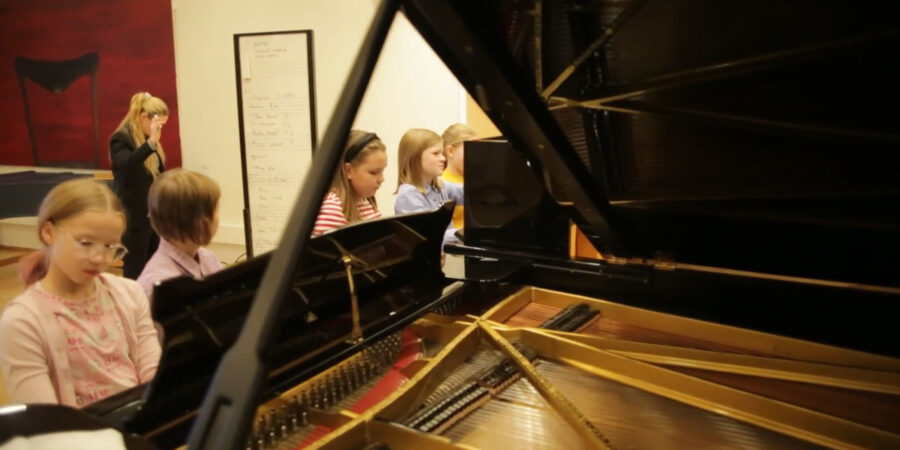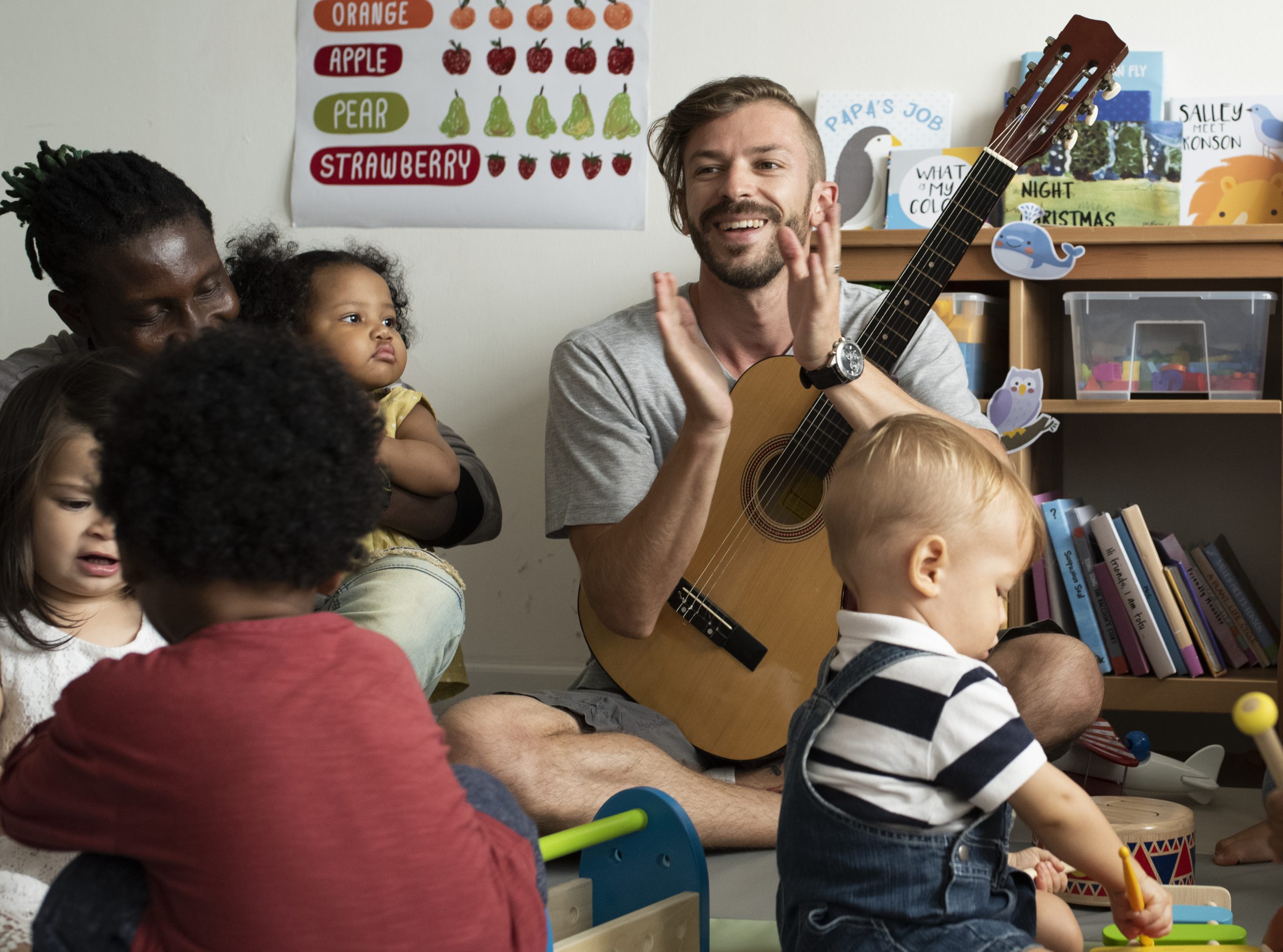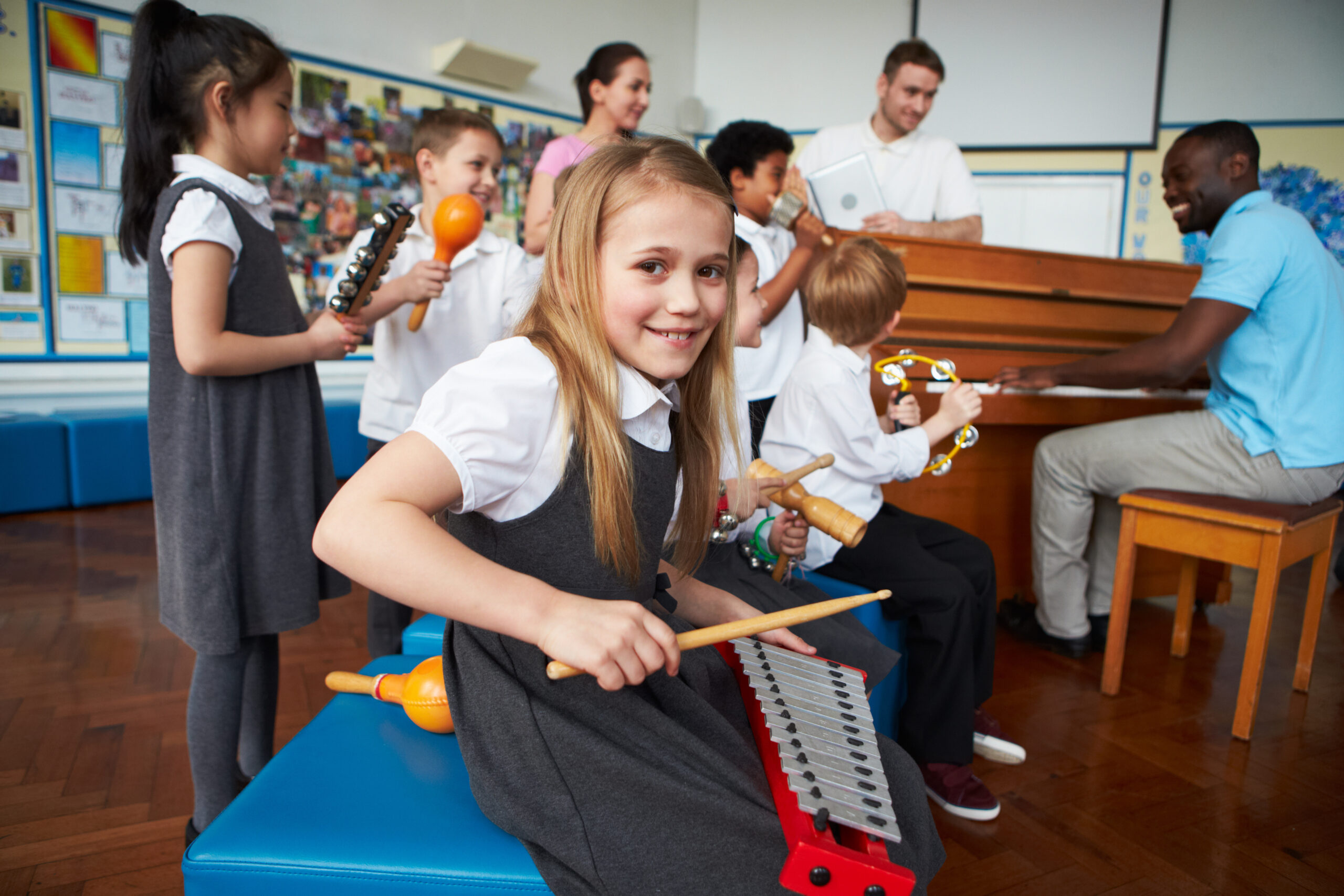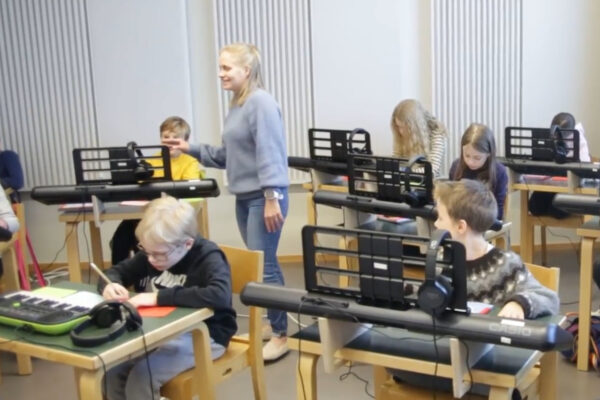
How long have you been teaching piano groups?
I have been teaching piano groups since a long time, students that are now 20-year-olds started in my piano groups when they were under 10 years old. Why did I choose piano groups and now other chamber music groups? There are some issues with putting together two beginners with different instruments, the piano teacher can’t be expected to teach and guide other instrument’s beginners and thus it’s more natural to teach a group where everyone plays the same instrument.
Where did it all start?
My own studying background is in Russia where the curriculum systematically included also piano duo. Of course it helps that I have a vast amount of material for piano duos and groups from my study years in Russia.
What happens in the video?
The performance in the video clip is an improvisation, the situation wasn’t prepared and the group in action is not an existing piano group. The pupils in the group were invited to play together for the occasion from different piano groups.
Is improvisation easier in groups?
It’s easier to improvise in groups because the result doesn’t depend only on one student’s ideas and inventions. Improvisation and composing in groups is easier because all children are different and the more introverted or shy students don’t have to take as big a role as the most brave and extroverted students. Composing alone is a very different type of action.
The students wanted to compose a piece
 Some time in the last years a student proposed to compose a piece together. It was a spontaneous idea and then I noticed that it worked very well in a group. So the idea wasn’t deliberate but I was able to realize that it worked.
Some time in the last years a student proposed to compose a piece together. It was a spontaneous idea and then I noticed that it worked very well in a group. So the idea wasn’t deliberate but I was able to realize that it worked.
It’s about musical structure and artistic maturity
When improvising and composing, the piano playing skills are not in the center of the attention, but it’s more about artistic education and musical structure. A musical piece is built of sections that have a duration and we must decide for example how many times a certain idea or pattern is repeated. We play piano and forte, make up different characters, estimate the qualities of ideas, whether they are good or bad, which idea we actually want to use. I always have a structure ready and I guide -if needed- the students to that direction.
What is the teacher’s role in the improvisation process?
As a teacher one must always be alert and “in”, if the students don’t come up with any ideas, it is the teacher who comes up with something. In it’s way this is a guided action, for example the teacher also reject or mark out some ideas.
What are the risks?
The risk is, of course, that someone keeps throwing in ideas and another one doesn’t come up with anything. To the one who is lacking ideas, the teacher should give something to work on, a role like the use of the pedal, scratching the piano or some other effect. There are different challenges in group dynamics, the aim is that all group members have something to do and that everyone gets positive feedback. Including even the smallest ideas is important and maybe the next time the introverted student might come up with more ideas.
A hidden collaboration
The group also makes it easier for the students to put in an idea that the others can spice up and the teacher can then lead the way to a musically functioning direction. The children have the feeling that they are the ones making the music but the teacher’s role in guiding the process is in the background, for example by giving out options. Thus it gets easier also for the beginners. There is a kind of illusion of a self-making process.
Dealing with rhythmic challenges in improvisation
The rhythm usually resolves by itself. At some point there is always student who says “I don’t get this rhythm at all” and that is when we decide if we count to 3 or 4. Different rhythm perceptions disturb the playing and the result is usually someone asking “How do we count here?”
It’s not only about the piano
General artistic education and esthetics are usually more present in this kind of musical action. We don’t have actual pianistic goals in the piano groups. The general aim is to understand the structure of the musical outcome, the realization of different characters and musical action.
Where could this all lead to?
It would be amazing if the students would get the motivation to compose their own musical pieces thanks to the piano groups. The direction of this action could be a real composition made by a student for piano solo or maybe in duo. The ideal path would be to go from a guided improvisation to an independent composition.
Teacher: Katri Säkö-Arias, Lapland Music Institute
Katri Säkö-Arias gained her Master of Music degree at the St. Petersburg  State Conservatory, where she studied piano performance with Professor Tatyana Zagorovskaya. She studied piano pedagogics and methodics with Professors Natalya Korykhalova and Lidia Volchek. She has performed as soloist and chamber musician throughout Europe, USA and South America. Katri now works at the Lapland Music Institute as senior teacher. She is a member of Mensa International.
State Conservatory, where she studied piano performance with Professor Tatyana Zagorovskaya. She studied piano pedagogics and methodics with Professors Natalya Korykhalova and Lidia Volchek. She has performed as soloist and chamber musician throughout Europe, USA and South America. Katri now works at the Lapland Music Institute as senior teacher. She is a member of Mensa International.





